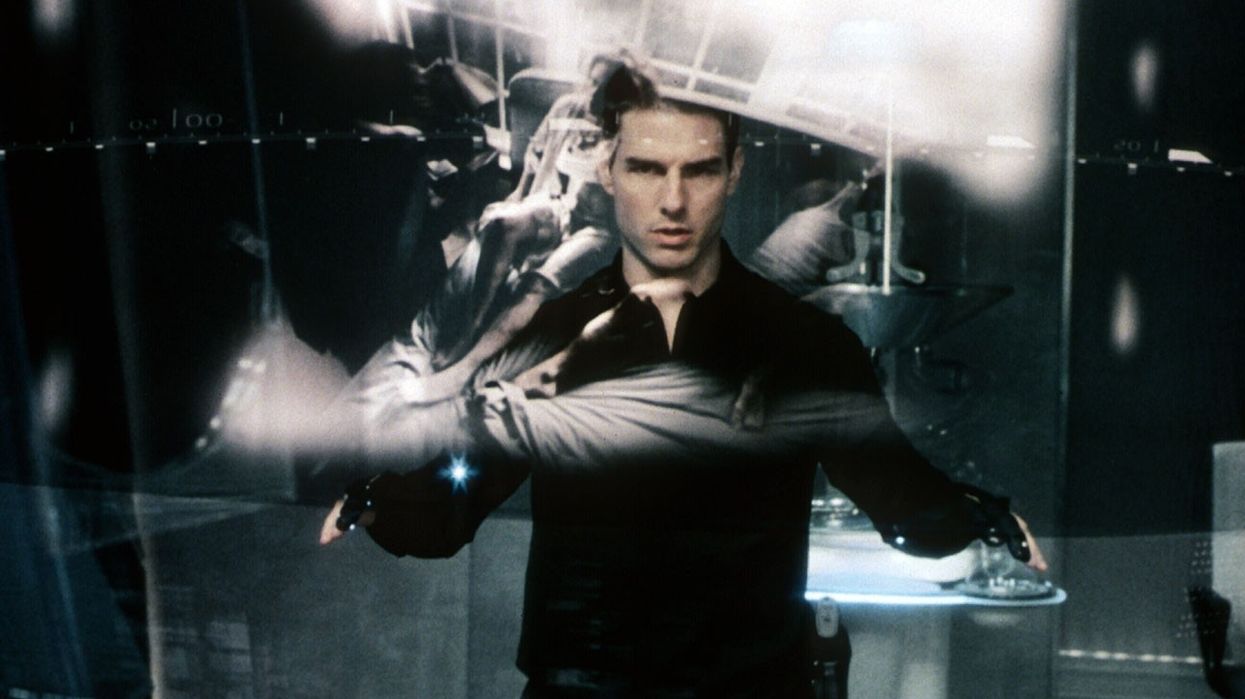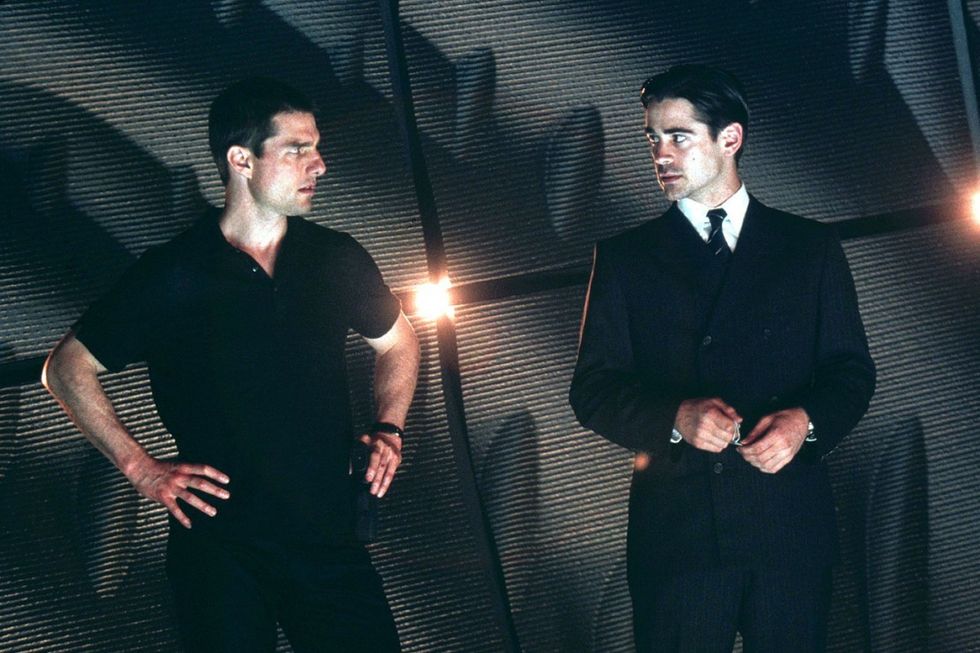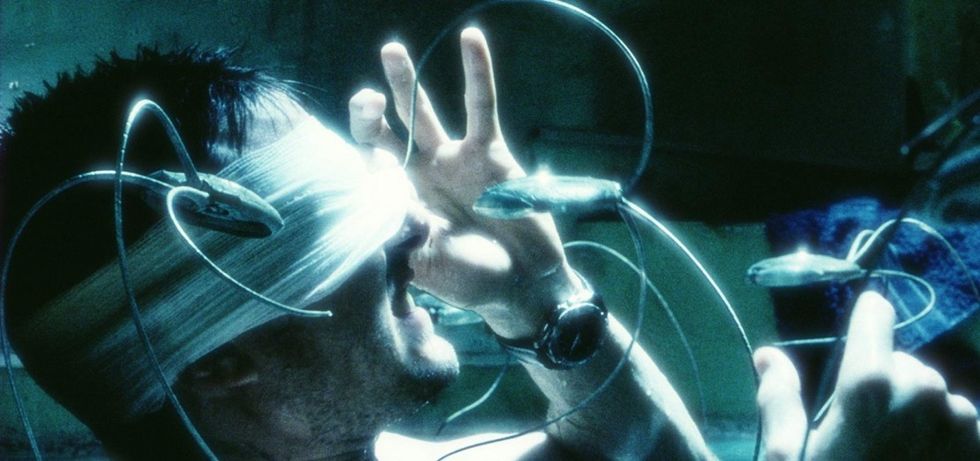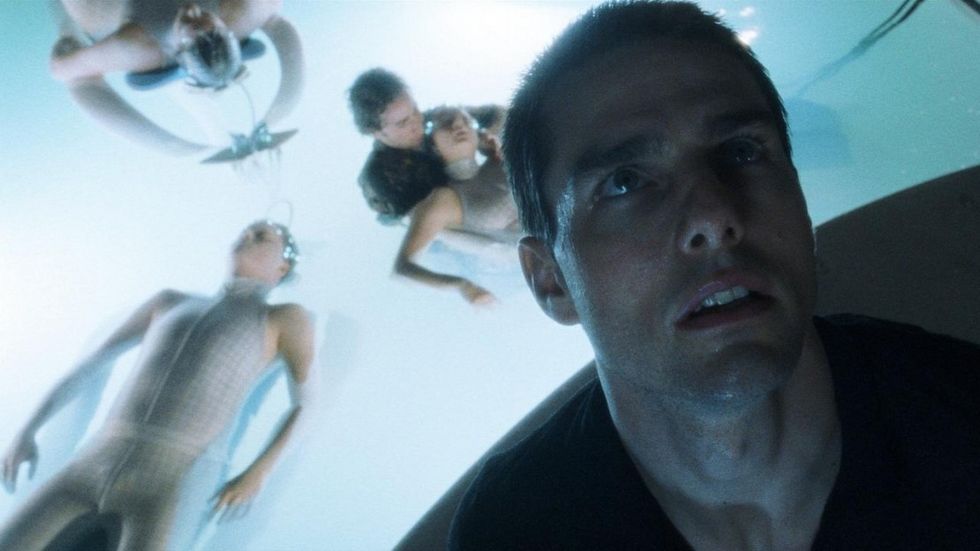3 Screenwriting Techniques That Turned 'Minority Report' Into a Classic
"Minority Report" is a film that delivers plenty of screenwriting lessons. We picked three that turned this science fiction movie from a predictable action flick to an instant classic.

Steven Spielberg’s Minority Report is an underrated film in the director's body of work and often overlooked in favor of flashier or more acclaimed films like Schindler's List or Jurassic Park. (Fun fact -- both movies came out in the same year!)
A closer look at the film reveals a smartly structured sci-fi noir featuring questions about free will, technology, and Tom Cruise Running™, which screenwriter Scott Frank’s script does a phenomenal job of, all while world building without getting bogged down in minutia.
Frank allows the human story to unfold in a relatable, understandable way and trusts his director to fill in the production design blanks. This video from Lessons from the Screenplay explains how he does it:
Let’s dive into three screenwriting takeaways from this video.
1. “Write this like it’s happening today.”
In the script, Frank and Spielberg agreed to focus on the characters and their immediate actions, rather than the high-tech world surrounding them. They both recognized that the human side of the story is what draws people in. It’s why they spend so much time setting up not just the concept of Precrime, but why it’s important to Anderton.
You can incorporate the same sensibilities into your script by focusing on the “why” instead of the “what.” We get that Tom Cruise is a good guy and he desperately wants Precrime to succeed. His backstory and motivation is far more interesting though. Which brings us to...

2. You got your drama in my exposition!
We’re going to cheat a little on this one because one of the scenes that the video refers to was actually (re)written by John August.
The scene I’m talking about is the one in which Danny Witwer, played by Colin Farrell, skeptically asks how Precrime knows that the people they arrest are guilty.
Instead of launching into a long conversation about quantum mechanics, probabilities vs. certainties, and metaphysical blah blah, Anderton just… rolls a ball.
Here's the scene. (Pardon the low-res video)
It seems simple, but August’s underlying philosophy was that he needed to take away all the audience’s questions, not just Witwer’s. He does so with a simple example and then moves on.
What makes this work is how the film positions Witwer as not just a newbie, but a skeptic. That puts him in direct conflict with Anderton even before Anderton is pre-accused of murder.
Conflict = drama, which makes exposition much more palatable.
You can do the same thing in your screenplay by making sure each scene has an obstacle that a character is trying to overcome.
Whether they succeed or not, it’s dramatic and that’s what viewers want to see.

3. Answer the Big Question (a.k.a. Theme)
The “Big Question” that Minority Report asks is, “Do we have free will?” Scott Frank’s script cleverly answers that question with a strong YES in its climactic scene: Burgess’ suicide and the subsequent dismantling of Precrime.
But notice why the question is important: Anderton’s character initially believes in Precrime as a valid law enforcement tool, and changes his mind at the end to believing it must be brought down.
Not only does Frank answer the Big Question, but he does so by having the hero arc.
Your screenplay should also have a Big Question, even if it’s not stated quite as openly as that of Minority Report. Part of creating interesting characters is giving them room to grow, and having them change their minds about the Big Question.
The emotional journey that forces them to change is what will get audiences to fall in love with your movie.

Source: Lessons From the Screenplay











